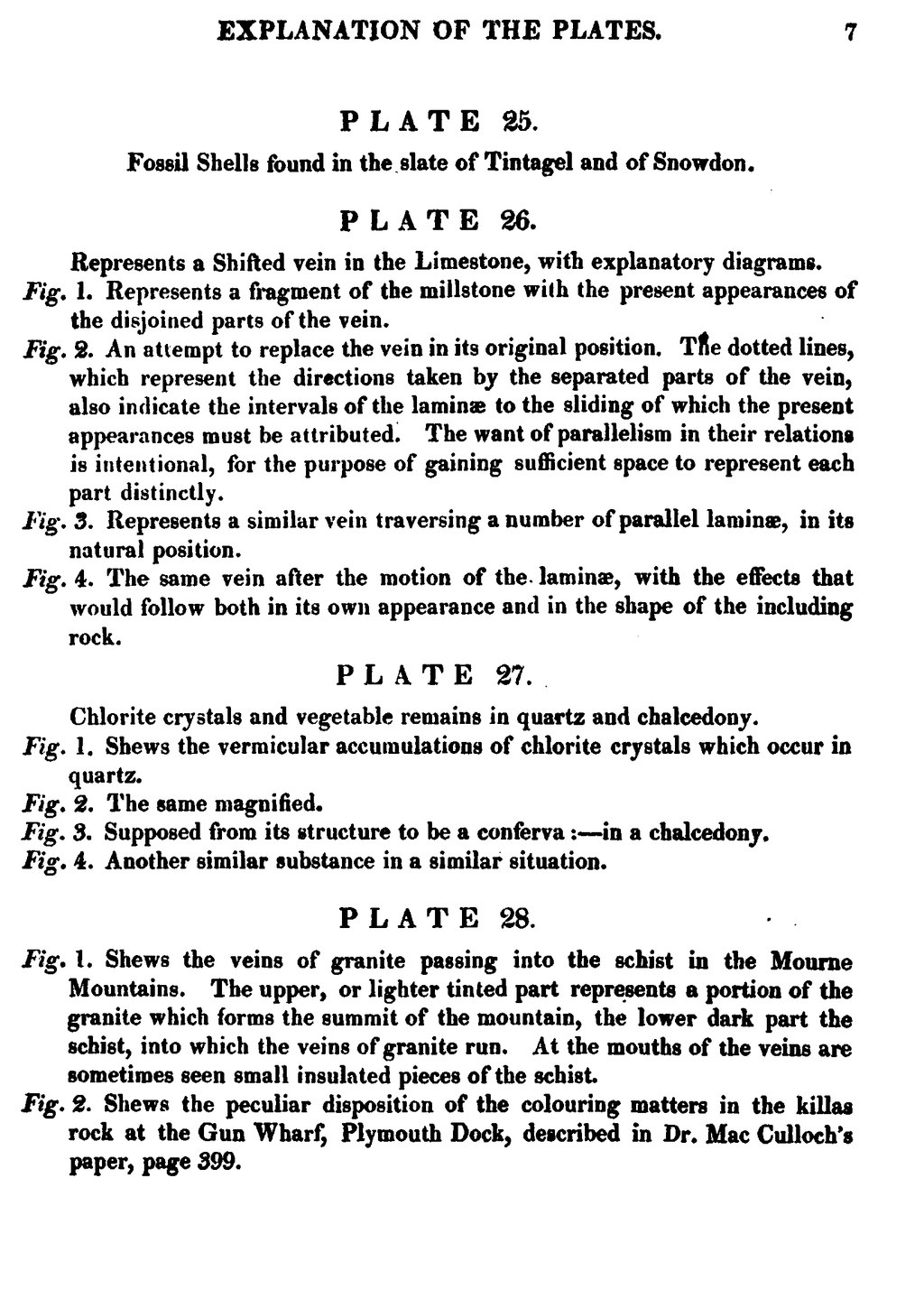Fossil Shells found in the slate of Tintagel and of Snowdon.
Represents a Shitfed vein in the Limestone, with explanatory diagrams.
Fig. 1. Represents a fragment of the millstone with the present appearances of the disjoined parts of the vein.
Fig. 2. An attempt to replace the vein in its original position. The dotted lines, which represent the directions taken by the separated parts of the vein, also indicate the intervals of the laminæ to the sliding of which the present appearances must be attributed. The want of parallelism in their relations is intentional, for the purpose of gaining sufficient space to represent each part distinctly.
Fig. 3. Represents a similar vein traversing a number of parallel laminæ, in its natural position.
Fig. 4. The same vein after the motion of the lamina, with the effects that would follow both in its own appearance and in the shape of the including rock.
Chlorite crystals and vegetable remains in quartz and chalcedony.
Fig. 1. Shews the vermicular accumulations of chlorite crystals which occur in quartz.
Fig. 2. The same magnified.
Fig. 3. Supposed from its structure to be a conferva:—in a chalcedony.
Fig. 4. Another similar substance in a similar situation.
Fig. 1. Shews the veins of granite passing into the schist in the Mourne Mountains. The upper, or lighter tinted part represents a portion of the granite which forms the summit of the mountain, the lower dark part the schist, into which the veins of granite run. At the mouths of the veins are sometimes seen small insulated pieces of the schist.
Fig. 2. Shews the peculiar disposition of the colouring matters in the killas rock at the Gun Wharf, Plymouth Dock, described in Dr. Mac Culloch's paper, page 399.
